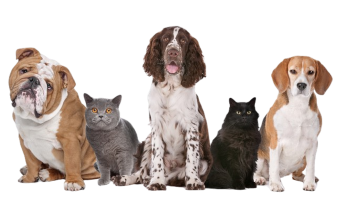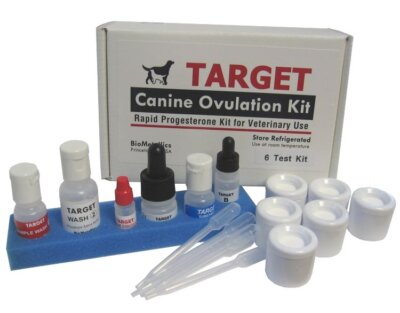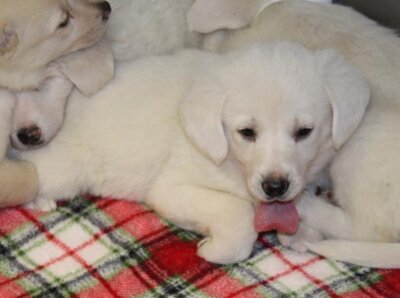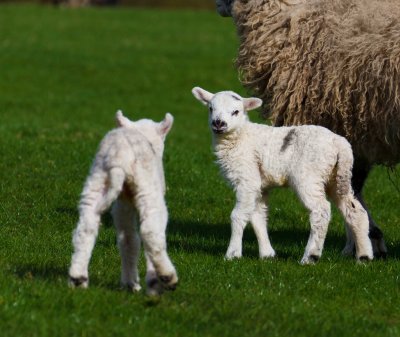
Testing re-homed and rescue dogs for Canine Brucellosis is simple with this in house testing kit.
Canine Brucellosis is on the rise for kennel keepers, puppy breeders and pet owners. Here’s why the simple and effective FASTest Brucella Canis test is now the vital off-the-shelf resource for dog rescuers, breeders and re-homers.
Rising Brucellosis Risk From Imported Rescue Dogs
The recent confirmed case of dog-to-human Brucella infection matches the steep rise in imports of rescue dogs from brucellosis endemic countries. Veterinary professionals, dog breeders and animal charities are voicing their concerns for the health of untested UK dogs and their human carers.
Human Brucellosis Risk From Untested Dogs
Before the Covid lockdown of 2020, there were just 3 UK cases of canine Brucella infection. This shot up with 97 more cases in just 6 months mostly traceable to imports or contacts with dogs from Eastern Europe. Human Animal Infections and Risk Surveillance (HAIRS) assesses the risk to human health from Brucella Canis as generally very low. But the risk may be higher for breeders of imported dogs, vets spaying and neutering infected dogs and anyone with a weak or suppressed immune system.
Symptoms and Treatment for Canine Brucellosis
Infected dogs may show tiredness and swollen lymph glands as well as stiffness and lameness. Brucella Canis infected dogs often suffer infertility and miscarriages. People exposed to Brucella Canis can suffer fever, headaches, tiredness and joint pain together with loss of appetite and weight. Most recover with antibiotics, but infection can lead to endocarditis or even meningitis if left untreated.
Confirmed Rescue-Dog to Human Brucella Infection
Imports of dogs from Belarus, Poland, Romania and Ukraine were temporarily halted after a confirmed dog-to-human Brucella Canis infection in August 2022. The BBC reported that Mrs Hayes of Stoke-on-Trent was hospitalised with constant shivering, severe headaches and severe back pain. Diagnostic tests showed that Mrs Hayes had contracted canine brucellosis. Moosha, Mrs Hayes’ recently re-homed Belarus rescue dog and most likely source of infection, also tested positive for Brucella Canis. Mrs Hayes recovered after antibiotic treatment, though her five dogs had to be destroyed to halt the threat of infection spreading more widely.
Link Between Brucellosis And Dog Imports
Most of the 11 to 12 million dogs in the UK live in domestic households with 31% housing more than one or more dog. 2023 DEFRA data shows a big increase in commercially imported dogs, including rescue dogs, rising from 41,313 in 2018 to 78,299 in 2021. Vet Times estimated that imported dogs make up 8% of the UK canine population. Of the veterinary professionals surveyed, Vet Times reported that 61% had seen increases in exotic diseases such as Brucella Canis in just two years. In April 2021, positive tests for Brucella Canis in dogs became legally reportable to the Animal and Plant Health Agency (APHA) brucella group, and to the DAERA Direct Regional Office in Northern Ireland.
Vets and Pet Charities Call for Testing
Brucella Canis is a ‘zoonotic’ infection, meaning that under some conditions it can pass from one species of animal to another. People with weakened immune systems, a prior illness or close and sustained contact with infected dogs are at greatest risk. Animal charities such as the PDSA are advising that dogs travelling from abroad should be tested for brucellosis before entering the UK. The British Veterinary Association (BVA), urges a proactive approach to reduce the Brucella Canis risk before, rather than after, dogs arrive in the UK. The Royal Veterinary College recommends testing for all imported dogs, dogs with a travel record to Brucella Canis endemic countries, and for any dog that has clinical signs that might indicate Brucella infection.
Safety For Rescue And Re-homed Dogs
UK Government advises that rescued and re-homed animals, and breeding stock not previously spayed or castrated, represent the highest risk of infection. Rescuers and prospective owners are urged to test for Brucella Canis a month before importation and to have the animals neutered where possible. Ensuring dogs are Brucella free prior to arrival protects UK dogs and people as well as avoiding potential veterinary costs. Any dog previously in contact with a dog from a Brucella Canis endemic country should also be tested. Dogs suspected of infection should be kept away from other dogs and people until testing is complete. Suspected infections should be made known to a veterinary surgeon, who can contact the Animal and Plant Health Agency (APHA) for further information and advice.
Keep Your Pets and Yourself Biosecure
The risk to human health from B.Canis is considered low. However, minimal contact with reproductive or birthing products, blood, and urine is advised. Washing hands thoroughly for a minimum of 20 seconds with soap and hot water, or the use alcohol gel sanitiser after handling such materials, is also strongly recommended. If B.canis symptoms are suspected, you should contact your GP or ring 111 with details of your possible exposure to an infected in a dog. Also discuss your dog’s symptoms with your vet. If you, your kennel staff or a member of your household, is pregnant, immunosuppressed, or a young child, consider limiting interactions with the suspect infected dog.
B.Canis Testing For Kennels, Breeders and Re-Homers
Vetlab’s FASTest Brucella.canis test Veterinary Diagnostic Test Kit provides Kennels, Breeders and Re-Homers with reliable, cost-effective Brucella Canis screening and monitoring. As simple to use as the now familiar COVID self-test kits, the veterinary in house, 20 minute easy to handle test uses a small, plastic strip that gives a clear-cut positive or ‘all-clear’ negative result supported by an integral ‘control’ line showing that the test is performing correctly.
FASTest Brucella Canis test kits and further information, on this and on the full range of animal health diagnostic kits with real-world practicality, is available from our website www.vetlabsupplies.co.uk or telephone 01798 874657










